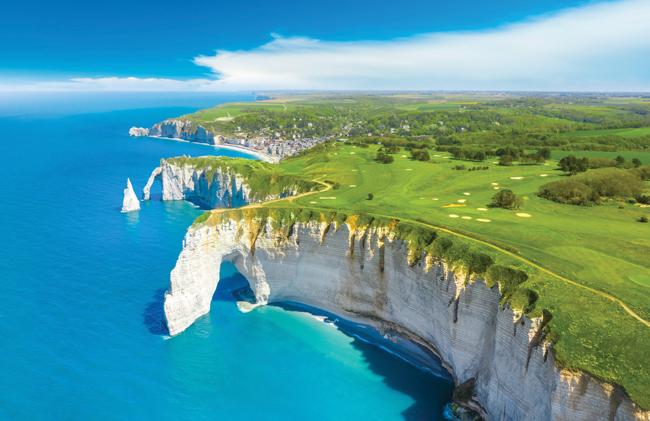Normandy, a region steeped in history and renowned for its picturesque landscapes, offers an unforgettable escape for travelers seeking both cultural depth and natural beauty. In “36 Hours in Normandy, France: Things to Do and See,” The New York Times presents a curated itinerary that captures the essence of this iconic destination. From the haunting D-Day beaches to charming medieval towns and world-class cuisine, this guide highlights the must-see sites and experiences that can be savored within a brief yet immersive visit. Whether you’re a history buff, foodie, or nature enthusiast, Normandy promises a rich and varied adventure in just a day and a half.
Exploring Normandy’s Historic Beaches and War Memorials
Normandy’s coastline stands as a solemn reminder of one of the most pivotal events of the 20th century. Visitors can walk along Omaha Beach, where the morning fog still seems to echo with the sounds of the historic D-Day landings. The vast expanse of sandy shore contrasts with the quiet dignity of the nearby memorials, including the American Cemetery at Colleville-sur-Mer, where thousands of white crosses mark the resting places of soldiers who gave their lives. Each site offers unique insights into the courage and sacrifice required during the liberation of France in 1944.
For history enthusiasts and travelers alike, several key landmarks provide immersive educational experiences accompanied by guided tours or informative displays. Highlights include:
- Arromanches 360° Cinema: Offering a panoramic film experience of the Battle of Normandy.
- Juno Beach Centre: Dedicated to Canadian forces and their crucial role.
- Battery of Longues-sur-Mer: Preserved German artillery emplacements.
These destinations, paired with tranquil seaside views, invite reflection, making Normandy a living museum where history unfolds beyond textbooks. Exploring these sites is not merely a walk through the past, but a powerful homage to resilience and freedom.
Sampling Authentic Norman Cuisine in Charming Local Bistros
Normandy’s culinary landscape is a vibrant tapestry woven from its rich agricultural heritage and coastal bounty. Venture into cozy bistros tucked away in the heart of towns like Bayeux and Honfleur to find menus brimming with freshly shucked oysters, creamy Camembert cheese, and tender cuts of apple-glazed pork. Many establishments emphasize local sourcing, turning simple ingredients into dishes that are as authentic as they are delicious. Pair your meal with a glass of crisp Calvados or a delicate cider crafted from locally grown apples, enhancing each bite with the region’s signature flavors.
For those eager to discover the breadth of Norman gastronomy, these spots often feature daily specials that reflect the season’s best offerings. Expect hearty stews like Tripes à la mode de Caen or lighter fare such as seafood platters adorned with freshly caught mussels and scallops. Below is a guide to must-try Norman specialties, complemented by pairing recommendations to maximize your tasting journey:
| Dish | Main Ingredient | Recommended Pairing |
|---|---|---|
| Teurgoule | Rice pudding with cinnamon | Sweet apple cider |
| Coquilles Saint-Jacques | Scallops in creamy sauce | Dry white wine (Pays d’Auge) |
| Aple Tart (Tarte Normande) | Apples, cream, pastry | Calvados |
Discovering the Medieval Architecture and Art of Bayeux
Bayeux stands as a captivating testament to medieval craftsmanship, where every stone and brushstroke tells a story of centuries past. The Bayeux Cathedral, with its soaring Gothic spires and intricately carved portals, invites visitors to step back into the 11th century. Inside, the stained glass windows bathe the nave in a kaleidoscope of colors, illustrating biblical tales alongside scenes of local history. Just a short walk away, the famed Bayeux Tapestry Museum offers an unparalleled glimpse into medieval artistry-a nearly 70-meter embroidered cloth narrating the Norman conquest of England with astonishing detail and vibrant storytelling.
Beyond these landmarks, wandering through Bayeux’s cobbled streets reveals a vibrant tapestry of medieval life:
- Half-timbered houses: These quaint dwellings boast exposed wooden beams and flower-adorned facades.
- Medieval gardens: Carefully reconstructed with herbs and plants once used for medicine and cooking.
- Museums and galleries: Showcasing illuminated manuscripts, period weaponry, and local artisans’ works.
For a brief overview of must-see medieval sites, the table below outlines key highlights with their historical significance and approximate visit duration:
| Site | Significance | Recommended Visit |
|---|---|---|
| Bayeux Cathedral | Gothic architecture & religious art | 1 hour |
| Bayeux Tapestry Museum | Norman conquest embroidered history | 1.5 hours |
| Medieval Garden | Herbal remedies & period flora | 30 minutes |
| Maison des Arts | Local medieval art exhibitions | 45 minutes |
Wrapping Up
As the sun sets over the picturesque landscapes of Normandy, travelers depart enriched by the region’s unique blend of history, culture, and natural beauty. In just 36 hours, visitors can immerse themselves in the poignant legacy of the D-Day beaches, savor the renowned local cuisine, and explore charming towns that echo with centuries of stories. Normandy remains a compelling destination for those seeking both reflection and discovery, offering a compact yet profound experience that resonates long after the visit concludes.




